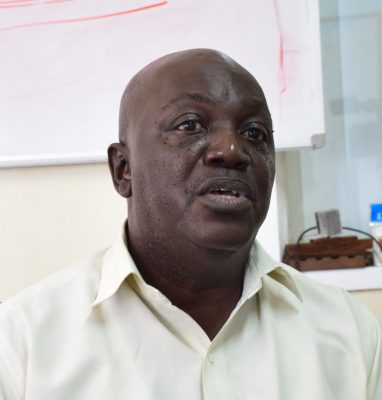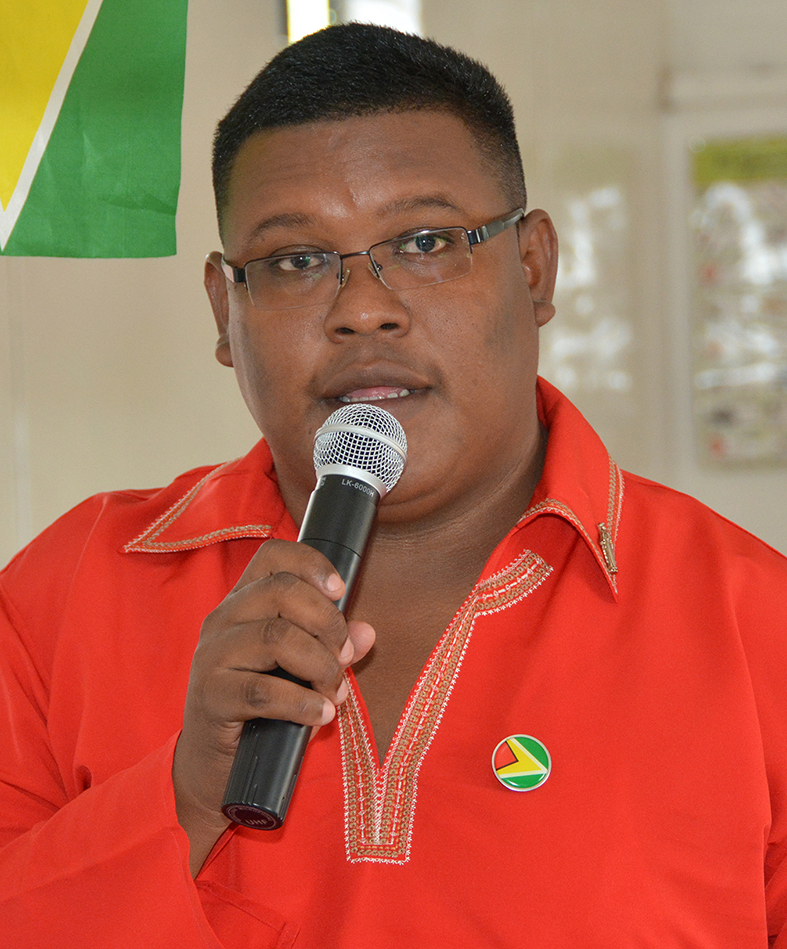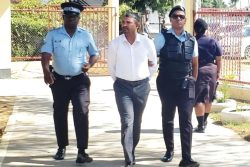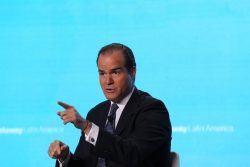Government’s $264 million solar farm, which was designed to increase the supply of electricity to residents of Mabaruma, will not generate enough energy to provide 17 hours of daily electricity as is being claimed, according to Regional Chairman Brentnol Ashley.
Ashley, in a telephone interview, told Sunday Stabroek that while the Regional Democratic Council (RDC) is in support of “going green” and utilising renewable energy, he feels the Public Infrastructure Ministry should properly inform residents, who already have high hopes of benefitting from the increased supply of electricity, about the reality of the situation.
“As it relates to the solar farm, our concern is that it is being placed in the media’s domain that the solar farm, in its establishment, will provide 17 hours of electricity. However, when we were briefed outside of what the Mayor and Town Council would have heard about the 17 hours of electricity, we learnt that the solar system is not something that is going to be working independently, as though they are trapping the energy coming from the sun, but rather that it will be a hybrid system, meaning that it will be integrated into the existing gen set that we have,” the Chairman shared.

“Yes, there is going to be an increase in the hours of electricity provided, but not by the additional hours that would make it 17 hours….I was reliably informed that the solar farm does not have the necessary equipment, such as the batteries, that will enable it to trap and store the energy for a long period of time,” he added.
The Chairman went on to highlight the reduction in the quantity of diesel used to run the generator set utilized by the Town, as the only “significant” feature of the project.
“The only thing significant that will come out of it is, we will have a reduction in the amount of diesel being consumed by the generator set because it will help to take off some of [the] load on the grid through the hybrid system, which will see a decrease in the amount of diesel being used on a daily basis,” Ashley said.
He also shared that he had spoken with the Chief Executive Officer (CEO) of the Hinterland Electrification Programme, Horace Williams, whom he claims confirmed that the system may not provide the said number of hours which would have been previously announced.
“He, too, confirmed that the system may not provide that amount of hours of electricity, and because of what I am seeing here, I would have asked him to correct and give guidance to the necessary persons, whether it’s the municipality or so, as to what would be the work coming out of the solar farm. That is where our concern is, because residents of Mabaruma are of the view that there will be a drastic increase in the electricity provided and that will not be so,” the Chairman said.
“While we at the RDC fully support the idea of going green and using renewable energy, we also like that when a system is put in place, that it be a system that is holistic and that will achieve the objective of why it is being established,” he added.
From 17 to 24 hours
However, Williams, who also spoke with this newspaper, maintained that once the solar farm is up and running, it will be able to provide the 17 hours of electricity to residents in Mabaruma. He noted, too, that once the 17 hours of electricity supply is achieved, additional steps will be taken to increase the supply to allow for a 24-hour supply, which he said, has always been the ultimate goal.
“We will eventually get to 24 hours but initially we will be moving to supply 17 and then increase to 24 hours…. We are just going through some testing now, because remember, this farm is the first of its kind in Guyana and so we are doing testing and as soon as we iron out all the issues, [and] kinks in the process and we start full operation with the farm, we move to 17 hours and gradually to 24 hours, because we always intended to move to 24 hours,” Williams said.
In response to the Regional Chairman’s claims that the farm lacks the necessary mechanism to store the energy which is being produced, the CEO explained that while there are batteries that have the capacity to store power, they will more serve as a stability mechanism for the system.
“Those would mainly be for stability of the system… The system, as he mentioned, is a hybrid system, which means we will be running solar along with the diesel generator. What that will do is reduce the consumption of diesel, so the storage that we have is mainly to add stability,” he said.
“Generally storage is costly, so first we would move to the hybrid system to reduce fuel consumption and eventually we are hoping to add more supply from other renewable energy sources and maybe even expand on the solar sometime in the future,” Williams added.
When asked if the proposed Hosororo Hydropower project would be one such source, the CEO said, “The Hosororo is a small site, but as GEA is implementing that project, we expect that our local engineers will learn from the process of developing small hydro systems, etc. So that’s a learning process, but it will contribute yes to the electricity system in Mabaruma.”
Significantly, he noted the plans to introduce metered systems to Mabaruma in order to track energy consumption by residents, particularly since persons have been paying a fixed monthly rate for the electricity they consume.
“The plan is to move to metering because at the moment there are no incentives for reducing electricity and fuel consumption, so the intention is to install meters and bill consumers based on consumption like we do on the coast. We will be moving from initially having 9 hours to 17 hours of electricity, and we will need information on how they will be consuming beyond the 9 hours, which will mainly be at nights or early in the morning,” he stated. “We are hoping to start the metering very shortly, we sent up meters there last week. A set of meters went up but we don’t have sufficient meters at this time for every consumer. We have over 700 consumers at this time, so we are going to start with the commercial entities and government buildings and then we will move down to residential buildings,” Williams stated.
Commenting on the progress made so far in setting up the system, the CEO said, “I don’t want to specifically put a time frame, as I said we are going through all the testing right now and it’s a new system in Guyana and I can’t predict at this time but we are hoping to be up and running fully before the end of the year.”
In the presentation of the 2017 budget, Minister of Finance Winston Jordan had announced a budgetary allocation of almost $1 billion to implement a series of renewable energy and energy efficiency projects.
He said these interventions, to be channeled through and managed by the Guyana Energy Agency, would include the installation of the first solar farm on a large scale in Mabaruma. The Minister had also explained that when operational, the 400-kilowatt solar farm will afford an additional 17 hours of electricity to the 3,000 residents of Mabaruma.
Furthermore, he said government had also advanced the pursuit of additional solar farms, one with a capacity of 800 kilowatts at Lethem, another of 400 kilowatts at Mahdia, and one of 1.5 megawatts at Bartica.










